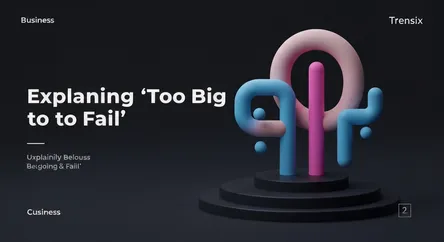Business
Explaining 'Too Big to Fail'

Discover the 'too big to fail' theory, where firms are so vital to an economy that their failure would be disastrous, requiring a government bailout.
What is it?
"Too big to fail" (TBTF) is a theory in economics and finance asserting that certain corporations, particularly financial institutions, are so large and interconnected that their failure would trigger a catastrophic economic crisis. The TBTF concept implies that these institutions are so vital to the financial system that governments will have no choice but to provide massive bailouts to prevent them from collapsing. This is done to avoid a domino effect, where the failure of one major institution leads to the failure of many others, crippling the entire economy.
Why is it trending?
The term gained widespread prominence during the 2008 global financial crisis. The collapse of Lehman Brothers and the subsequent government bailouts of other major banks like AIG and Citigroup brought the TBTF problem into sharp focus. The topic trends whenever there's significant economic volatility or a major bank shows signs of distress, sparking public and political debate about financial regulation, systemic risk, and whether the measures put in place after 2008 are sufficient to prevent a repeat crisis.
How does it affect people?
For the average person, TBTF has mixed implications. Proponents of bailouts argue they protect people's savings, investments, and jobs by preventing a full-scale economic meltdown. However, critics argue it creates a "moral hazard," encouraging large banks to take excessive risks because they know they will be rescued. This can lead to taxpayer money being used to save private companies, raising questions of fairness and accountability, while the underlying risky behavior may continue.